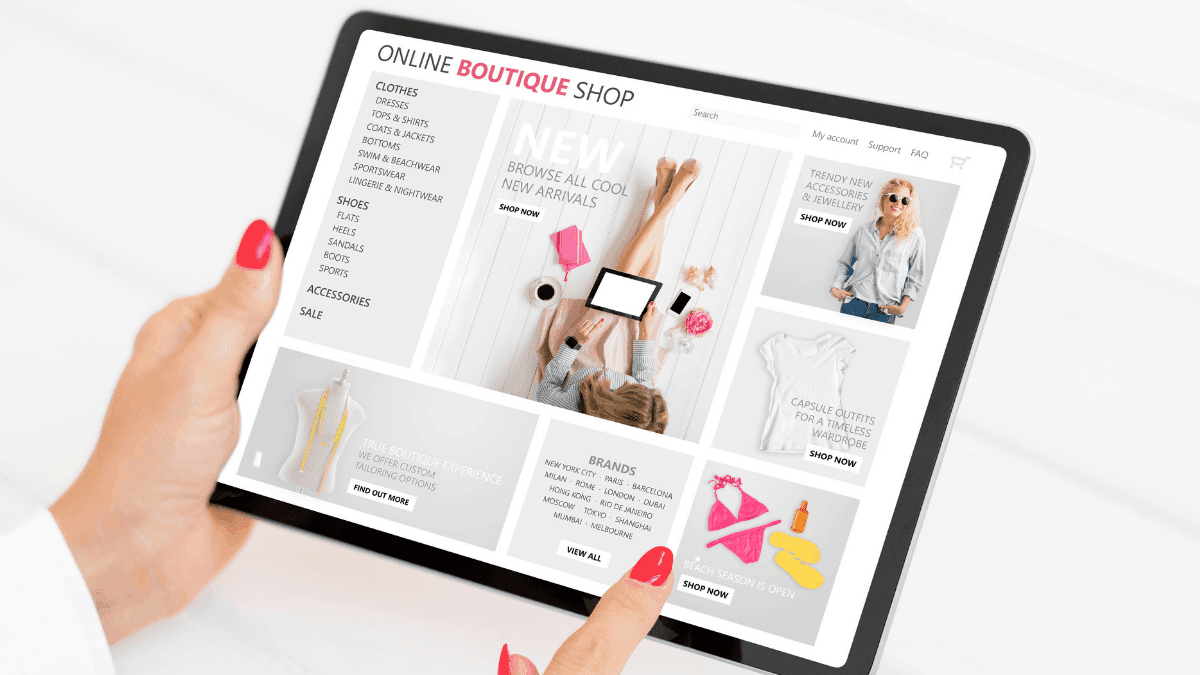Last year’s e-commerce boom, particularly for Victorian entrepreneurs who received government support to go online with intuitive technology platforms that can quickly get up and running, saw thousands of online stores take advantage of consumer shifts to online shopping, increased use of social media and web browsing, and new ways of finding and interacting with brands online.
While it can be overwhelming to start an online store from scratch, hundreds of entrepreneurs proved it can be done – even during a pandemic – by keeping it simple and having a clear online strategy.
Here are the fundamentals of getting an online store up and running, ready for the consumers of 2021:
1. Select an e–commerce platform
Gone are the days of needing to spend millions of dollars and months at a time to customise and set up the right technology to support your online business. Pick an intuitive, easy-to-use, and proven off-the-shelf retail operating system (OS) that comes with everything you need. Before committing to that technology platform, make sure your business idea, business name, logo, product information, and some eye-catching photos or imagery are ready to use.
2. Add your products
It may sound obvious, but this step requires more planning than many would expect. When considering which products to sell online, make sure the end-customer is in mind and the product descriptions, product availability, shipping options, pricing, and imagery are all relevant to them.
For brand new stores and products, also consider whether pre-selling a particular product is right for your business, and whether it could help to build hype ahead of an official launch. Men’s skincare brand, The Daily, took this approach and found the early days of launching and pre-sales helped the business garner clout and sales from the start.
3. Build key pages for your online store
As well as having attractive products to drive sales, customers will want to know who you are, how your business operates, and why you exist. The must-haves include pages for Contact, About, FAQ, and Policy information, and customers will likely be interested in reading further about your business based on what makes it special. For example, for eco-friendly products, customers will want to know what makes the products eco-friendly, how they are created, and the philosophy behind the business’ purpose.
4. Make your store unique
Just because your e-commerce platform has all the fundamentals included off-the-shelf, doesn’t mean your store needs to look and feel like everyone else’s. When customising an online store, customise the theme, logos, colour palette, headings, navigation, and checkout to uniquely reflect the store’s brand. These customisations, as well as making the store stand out among competitors, also provide unique ways to connect with and attract customers.
5. Determine shipping
In Australia, 59 per cent of consumers emphasize free delivery as a crucial part of their online shopping experience according to Shopify’s latest Future of Commerce report. Particularly since the pandemic, consumers are looking for more reliable and personalised options when it comes to delivery. As well as traditional options to consider such as free shipping, real-time carrier rates, flat shipping rates, and local pick-up and delivery, merchants should also consider alternative delivery options such as in-store shopping by appointments and curbside pickups.
6. Set up payments and taxes
This is a critical aspect of running the business that should be relatively stress-free if the right retail OS is in place. Make sure your technology platform automatically accepts a range of payment forms, and also automatically manages the tax component of sales and purchases.
7. Get ready for lift-off
Last – but definitely not least – make sure the store is ready to hit the ground running once it is launched. Get a fully branded URL so customers know you mean business, and then set up the store to sell across all relevant sales channels. As well as the obvious ‘buy button’ on the website, consider social networks, POS solutions, and marketplaces.
This is also the ideal time to set up the store for effective marketing. Ensure the retail OS has intuitive analytics features, so you can see vital information around sales, orders, and customers on the go, as businesses like Fusspot Collagen Beauty Tea do with intuitive mobile apps for their online store.
Make sure the website is also SEO-friendly, and customers who are searching for your products can easily find them with simple keywords that are scattered across the store’s key landing pages. Free keyword research tools like Ubersuggest or Keyword Surfer (Chrome extension) can help estimate how many times people search a specific query in a month and what types of searches happen around that keyword.
8. Launch!
An online store doesn’t need to be perfect to be ready to launch. With the basics in place, make sure the analytics behind the store, marketing driving customers to the store, and the customer feedback related to the store’s products are all regularly analysed and reviewed. That information is gold and will help with decision-making and ongoing tweaks to the online store to make it more effective, customer-friendly, and profitable.
Keep up to date with Dynamic Business on LinkedIn, Twitter, Facebook and Instagram.

